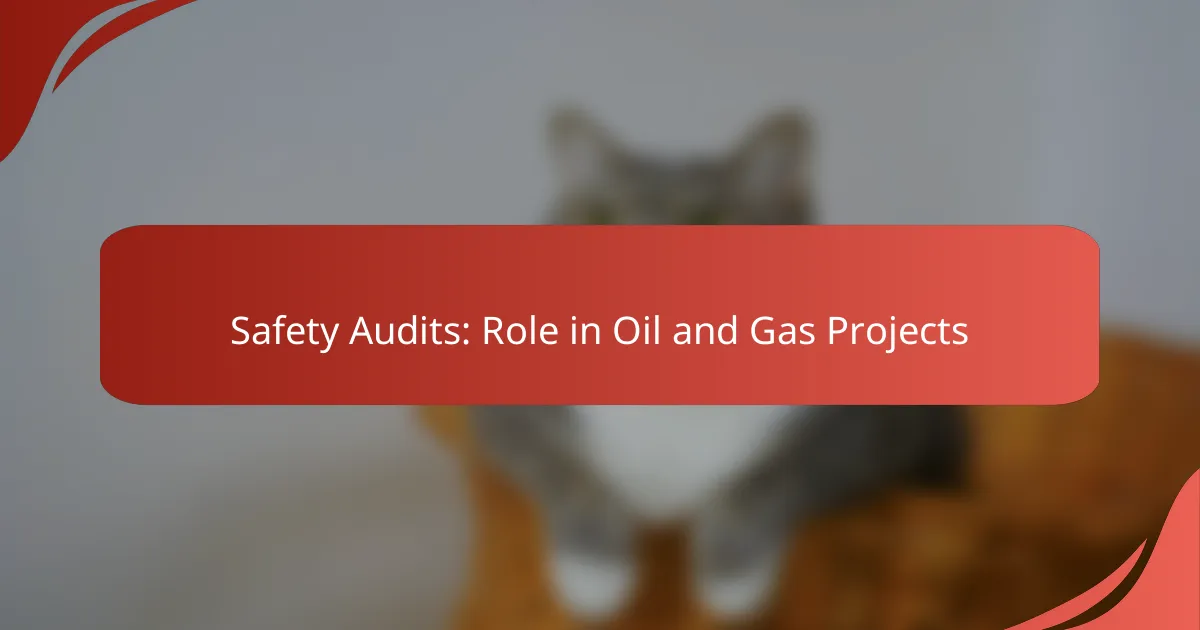Safety audits are essential in oil and gas projects, particularly in Texas, as they identify potential hazards and ensure compliance with industry regulations. By enhancing operational efficiency and mitigating risks, these audits play a vital role in maintaining high safety standards in a high-stakes environment.
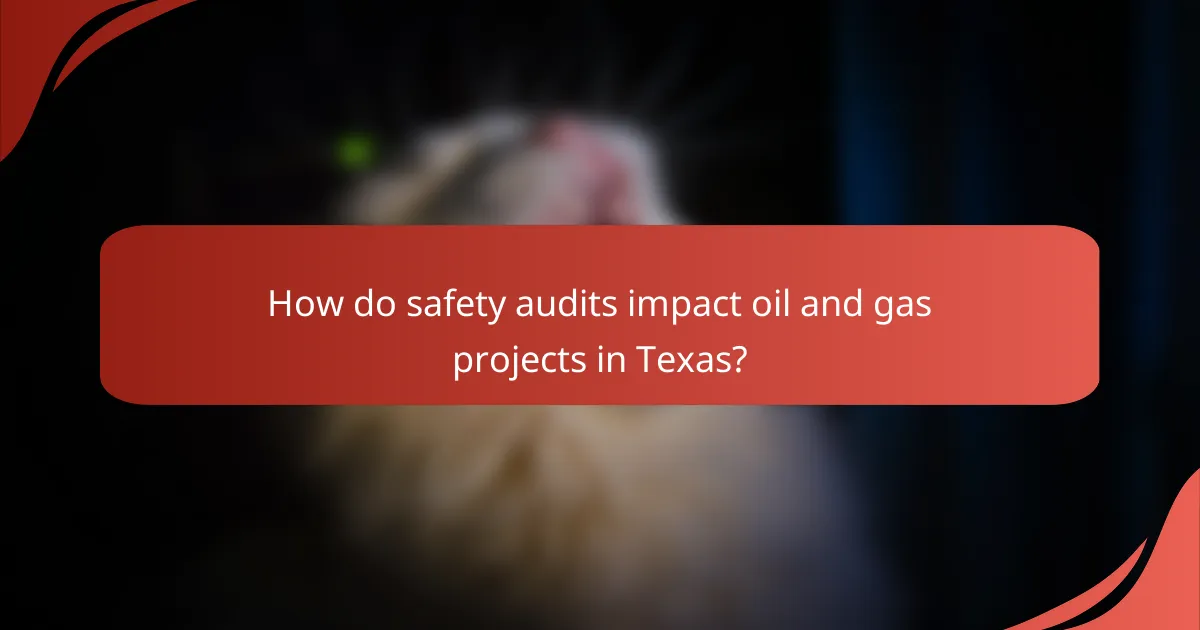
How do safety audits impact oil and gas projects in Texas?
Safety audits play a crucial role in oil and gas projects in Texas by identifying potential hazards, ensuring compliance with regulations, and ultimately enhancing operational efficiency. These audits help companies mitigate risks and improve safety standards, which is vital in a high-stakes industry like oil and gas.
Risk identification
Risk identification is a fundamental aspect of safety audits in oil and gas projects. Through systematic evaluations, auditors can pinpoint hazards that may not be immediately apparent, such as equipment failures or unsafe work practices. This proactive approach allows companies to address issues before they escalate into serious incidents.
For example, during an audit, an inspector might discover that certain machinery lacks proper safety guards, which could lead to accidents. By identifying such risks early, companies can implement corrective measures, reducing the likelihood of injuries and operational disruptions.
Regulatory compliance
Regulatory compliance is essential for oil and gas projects, and safety audits ensure that companies adhere to local and federal regulations. In Texas, operators must comply with standards set by the Texas Railroad Commission and the Occupational Safety and Health Administration (OSHA). Regular audits help verify that safety protocols are being followed, thereby avoiding legal penalties and enhancing public trust.
Companies should maintain thorough documentation of audit findings and corrective actions taken. This not only demonstrates compliance but also serves as a valuable resource during inspections by regulatory bodies.
Cost reduction
Safety audits can lead to significant cost reductions in oil and gas projects by minimizing accidents and their associated expenses. When safety measures are effectively implemented, companies can reduce downtime, lower insurance premiums, and avoid costly fines related to non-compliance.
For instance, investing in safety training and equipment upgrades identified during audits can lead to long-term savings by preventing accidents that disrupt operations. Companies should view safety audits as an investment rather than a cost, as the potential savings from avoiding incidents can far exceed the expenses incurred during the audit process.
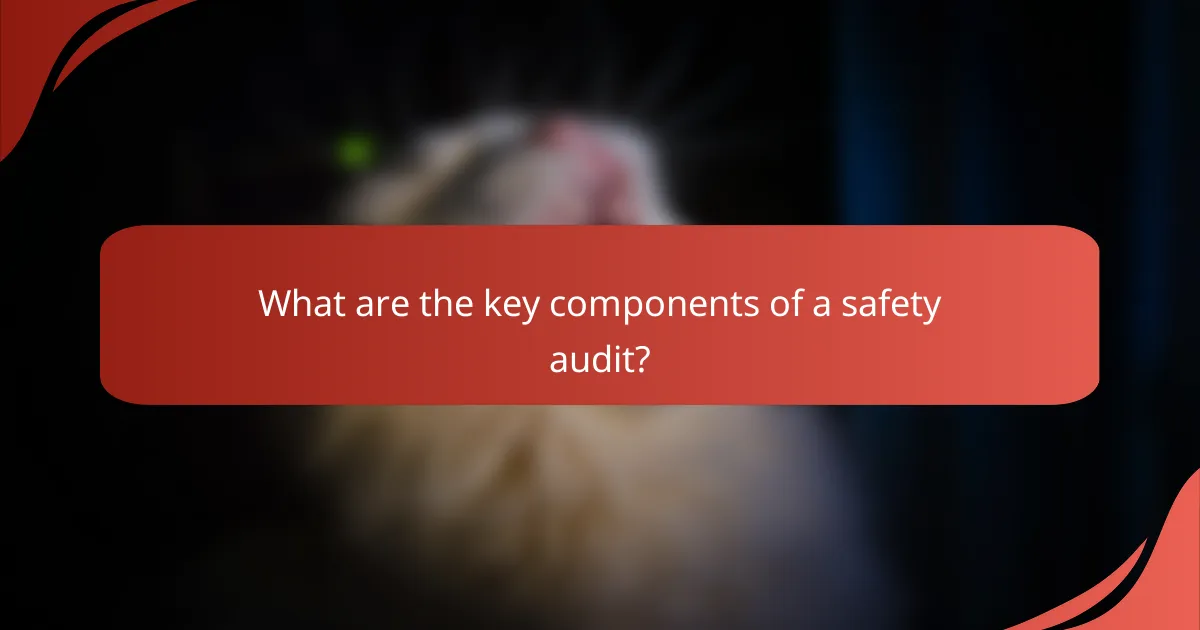
What are the key components of a safety audit?
A safety audit in oil and gas projects typically includes several key components that ensure compliance and risk management. These components focus on identifying hazards, evaluating site conditions, and ensuring that employees are adequately trained to handle potential risks.
Hazard assessment
Hazard assessment is the process of identifying potential risks associated with oil and gas operations. This involves analyzing various factors such as equipment, processes, and environmental conditions to determine what could go wrong and the potential consequences.
To conduct an effective hazard assessment, teams often use tools like risk matrices or checklists. These tools help prioritize risks based on their likelihood and severity, allowing for targeted mitigation strategies.
Site inspections
Site inspections are critical for verifying that safety protocols are being followed and that the work environment is safe. Regular inspections help identify any deviations from safety standards, equipment malfunctions, or unsafe practices that could lead to accidents.
During site inspections, auditors should focus on high-risk areas, such as drilling sites and storage facilities. A checklist can be useful to ensure all safety measures are evaluated, including personal protective equipment (PPE) usage and emergency response readiness.
Employee training
Employee training is essential for ensuring that all personnel understand safety procedures and can respond appropriately to emergencies. Training programs should cover topics such as hazard recognition, proper equipment use, and emergency protocols.
Regular training sessions, including simulations and drills, help reinforce safety knowledge. It’s important to tailor training to the specific roles of employees, ensuring that everyone is equipped with the skills necessary to maintain a safe working environment.

What are the best practices for conducting safety audits?
Best practices for conducting safety audits in oil and gas projects include regular scheduling, involving stakeholders, and using checklists. These practices ensure thorough evaluations, enhance compliance with safety regulations, and promote a culture of safety within the organization.
Regular scheduling
Regular scheduling of safety audits is crucial for maintaining compliance and identifying potential hazards. Audits should be conducted at predetermined intervals, such as quarterly or biannually, to ensure consistent oversight. This frequency allows for timely identification of issues and implementation of corrective actions.
Establishing a calendar for audits helps in planning resources and ensuring that all necessary personnel are available. Consider aligning audit schedules with project milestones or operational changes to maximize their effectiveness.
Involving stakeholders
Involving stakeholders in safety audits enhances the process by incorporating diverse perspectives and expertise. Key stakeholders may include project managers, safety officers, and field personnel who can provide valuable insights into potential risks and safety practices. Their participation fosters a sense of ownership and accountability.
Regular meetings with stakeholders before and after audits can facilitate open communication about safety concerns and findings. This collaboration can lead to more effective safety measures and a stronger commitment to safety culture across the organization.
Using checklists
Using checklists during safety audits ensures a systematic approach to evaluating compliance and identifying hazards. Checklists can be tailored to specific projects or regulatory requirements, helping auditors focus on critical areas. They serve as a useful tool for documenting findings and tracking corrective actions.
When creating checklists, include key safety elements such as equipment inspections, hazard assessments, and emergency response procedures. Regularly updating these checklists to reflect changes in regulations or operational practices is essential for maintaining their effectiveness.
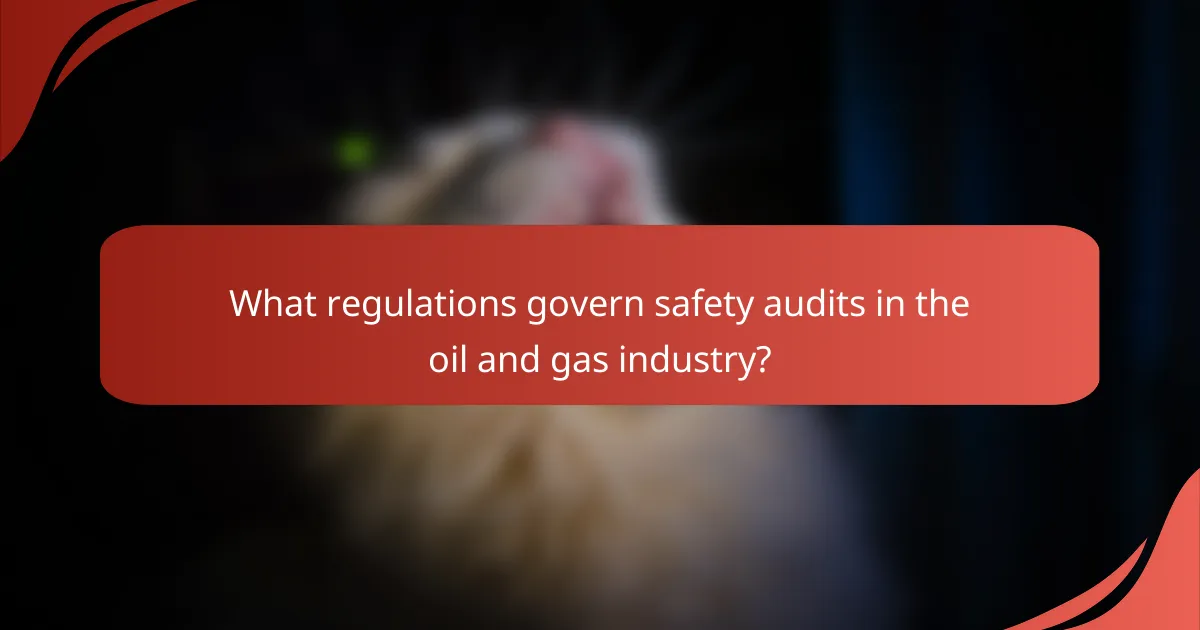
What regulations govern safety audits in the oil and gas industry?
Safety audits in the oil and gas industry are primarily governed by federal regulations, state laws, and industry standards. These regulations ensure that operations minimize risks to workers and the environment while maintaining compliance with safety protocols.
OSHA standards
The Occupational Safety and Health Administration (OSHA) sets forth regulations that require safety audits to identify hazards and ensure compliance with safety practices. Key standards include the General Duty Clause, which mandates a safe working environment, and specific regulations for hazardous materials and processes.
Employers must conduct regular audits to assess compliance with OSHA standards, which can include inspections of equipment, safety training records, and emergency response plans. Failure to comply can result in significant fines and increased liability.
EPA guidelines
The Environmental Protection Agency (EPA) provides guidelines that intersect with safety audits, focusing on environmental protection during oil and gas operations. These guidelines include regulations on emissions, waste management, and spill prevention, which are crucial for maintaining environmental safety.
Audits must evaluate compliance with the Clean Air Act and the Clean Water Act, among others. Companies should regularly review their practices against these guidelines to avoid penalties and ensure sustainable operations.
State-specific regulations
In addition to federal regulations, each state may have its own set of safety and environmental regulations that govern oil and gas operations. These state-specific regulations can vary significantly, addressing local environmental concerns and safety practices.
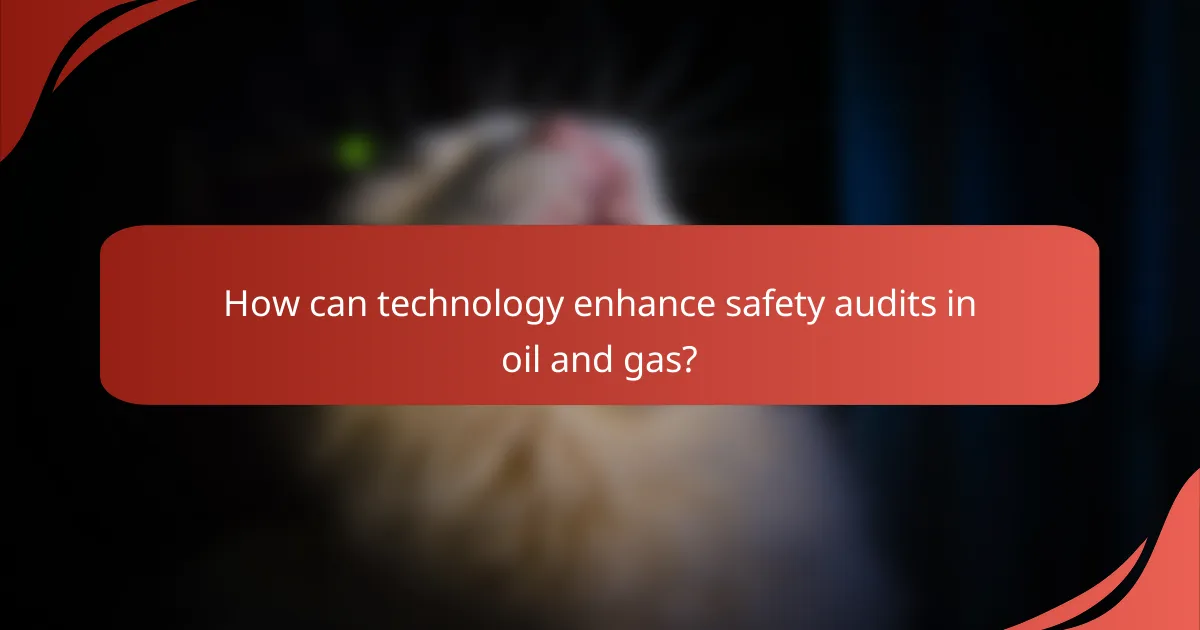
How can technology enhance safety audits in oil and gas?
Technology significantly enhances safety audits in oil and gas by improving data collection, analysis, and reporting processes. Advanced tools streamline inspections, reduce human error, and provide real-time insights, making it easier to identify and mitigate risks.
Data analytics
Data analytics plays a crucial role in enhancing safety audits by transforming raw data into actionable insights. By analyzing historical incident reports, equipment performance, and compliance records, companies can identify patterns and trends that may indicate potential safety issues.
For effective data analytics, organizations should focus on key performance indicators (KPIs) such as incident rates, near misses, and compliance levels. Utilizing predictive analytics can help forecast potential hazards, allowing for proactive measures to be implemented before incidents occur.
Mobile inspection apps
Mobile inspection apps facilitate real-time data collection during safety audits, allowing inspectors to document findings directly on-site. These applications often include features such as checklists, photo uploads, and GPS tagging, which enhance the accuracy and efficiency of audits.
When selecting a mobile inspection app, consider user-friendliness, integration capabilities with existing systems, and offline functionality. Implementing such technology can significantly reduce the time spent on audits and improve the quality of the data collected, leading to more effective safety management practices.
